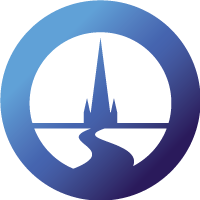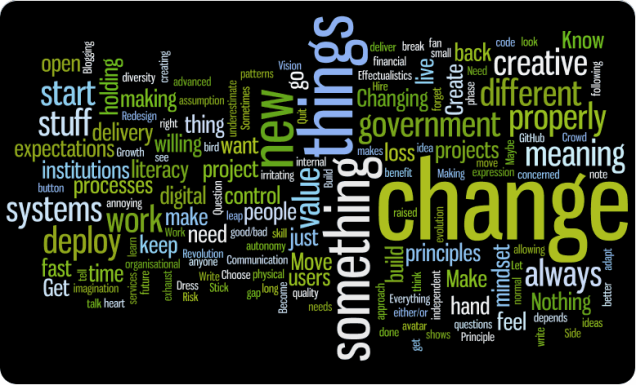Its always difficult trying to parse a conference as diverse as Webstock into a few lines of blog posts or a 1 hour talk. Sometimes I end up talking about a handful of the fascinating sessions, the ones that really resonated with me or the ones that seemed to have the most bearing on libraries, our work and our customers. Often I try to draw out a theme or two, as Webstock speakers often seem to have shared themes. It never does justice to either the speakers or the event as a whole. This year you’re getting a book/link list c/o BiblioCommons and a Wordle. Enjoy, explore, employ.
The Webstock 2014 book / link list
 This list features books by Webstock 2014 speakers as well as those they refer to, their presentations where they’ve been posted publicly, websites that they have referred to or in some cases their own websites.
This list features books by Webstock 2014 speakers as well as those they refer to, their presentations where they’ve been posted publicly, websites that they have referred to or in some cases their own websites.
The books in particular are very interesting in that you’ll notice that NONE of them are to do with web specifically. In fact most of them are to do with psychology, or rather thinking, with some design and media stuff thrown in. That’s because, despite its name, Webstock is not really a web conference (any more?) – sure most of its speakers and attendees are doing stuff on the web, but then most of everyone is on the web these days. If you tied me down and tickled me for an answer I would say that Webstock is about creativity. Not (only) arty farty creativity but the creativity that makes us make and innovate, whether it’s a really great public service website, a music album, an orchestra, a park, a health programme; and creating the conditions that maximise that creativity.
My Webstock ’14 Wordle
Check out that great big change. Not that that’s surprising – whether it was Liz’s “QUIT”, or Tom’s “revolution not evolution”, or Scott’s “‘what we’ve always done’ has no value”, there was a huge emphasis (see, a theme emerges) of making major changes to the way you do things and think about things, of letting go of the past and its baggage and reassessing where your plans are taking you. So to end this rambling summary I’m going to leave you with some of the snippets that made up the above and encourage you to have a look at the book/link list – I’ll be adding to it from time to time, particularly as the conference videos emerge.
Choose important over urgent… Erase the meanings that are holding you back.
Do it properly. Stop making digital services as if you’re buying something.
Don’t underestimate passion and human spirit. Take a leap of faith.
Don’t write a strategy, deliver. Go back to first principles, focus on user need.
Create patterns for personal serendipity. Create rituals.
Choose a gap, start small and run fast. Optimise for momentum.



 Mr. Penumbra’s 24-hour Bookstore
Mr. Penumbra’s 24-hour Bookstore